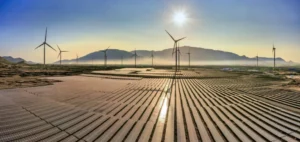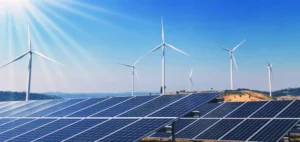China increased its total power generation capacity to 3.75 billion kilowatts (kW) by the end of October, marking a 17.3 % year-on-year rise. This increase is mainly attributed to the rapid development of renewable energy sources, particularly solar and wind.
Sharp acceleration in solar
Installed solar capacity reached 1.14 bn kW, up 43.8 % from the previous year. This growth rate places solar energy at the core of the national generation expansion. Meanwhile, wind capacity stood at 590 mn kW, registering a 21.4 % annual increase.
The figures, published by the National Energy Administration (NEA), show that renewables now account for a significant portion of China’s power system. At the end of September, total installed renewable capacity reached around 2.2 bn kW, or nearly 59.1 % of the total power capacity.
A fast-changing energy system
China now has the world’s largest renewable energy system. Between 2021 and 2025, during the first four years of the 14th Five-Year Plan, energy consumption per unit of gross domestic product decreased by 11.6 %, according to earlier NEA data. This trend reflects a major structural shift in the country’s energy mix.
At the same time, China’s electricity consumption—a key indicator of economic activity—saw double-digit growth last month. This strong demand supports ongoing efforts to increase national generation capacity.
Short-term outlook for the sector
The rapid growth in installed capacity highlights the country’s industrial priorities regarding energy infrastructure. The sustained pace of new installations, particularly solar and wind, could have implications for grid planning and markets related to generation equipment.






















